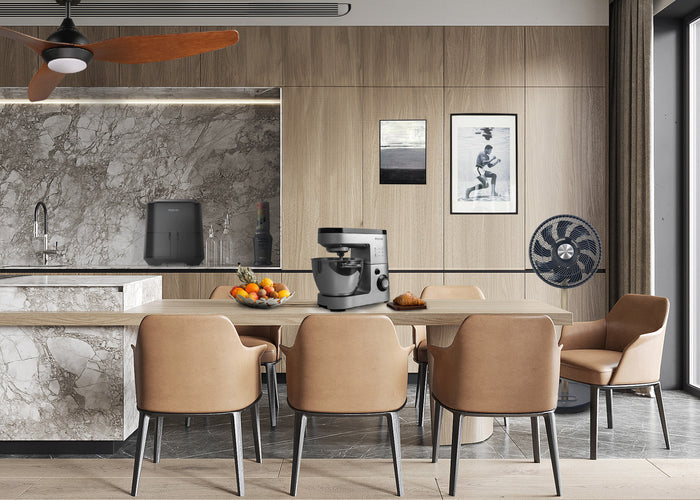2023 was the fourth warmest year on record for Singapore, due to the lingering effects of a climate phenomenon known as El Niño.
El Niño episodes typically occur every 3 - 5 years, however, if you’ve been living in Singapore for a while, hot weather is all too familiar.
We’ve found ways to adapt by planning activities wisely, carrying an umbrella, and mostly relying on fans and air conditioning to stay cool.
Air conditioners, however, are notorious for guzzling electricity, which leaves fans as the most economical choice.
But when it comes to choosing the right fan, there’s more to consider than just the size or design. The type of motor—AC or DC—plays a key role in determining energy efficiency, performance, and overall comfort.
In this article, we’ll break down the differences between AC vs DC motor fans to help you decide which one is right for your needs.
How AC and DC Fans Work
AC fans operate by using alternating current supplied from your home's electrical system, regulating speed by controlling the amount of electrical current supplied to the motor. AC fans have been around for years, and their reliable technology has made them a popular choice for many households.
DC fans, on the other hand, convert AC power supplied from your home into a direct current, to power the motor. This conversion actually makes DC fans more efficient than their AC counterparts, often offering smoother and quieter operation with better control over speed and energy consumption.
Which One is Right For You?
AC and DC fans both have distinct advantages, which may influence your choice depending on your needs. To help you make an informed decision, we’ll compare both options in efficiency, cost, speed control, noise level and durability.
Energy Efficiency
If energy efficiency is your main priority, we highly recommend DC fans. They consume up to 70% less energy than AC fans. This makes them an excellent choice for people who want to reduce their power consumption.
AC fans, though less efficient, shouldn’t be discounted. They work well for spaces where fans are used sparingly or for short periods of time. Furthermore, recent innovations have helped reduce the amount of energy they consume.
Cost Considerations
One of the main advantages of AC fans is that they are generally more affordable than DC fans, due to the lower manufacturing cost. That being said, DC fans, despite being more expensive up front, result in long-term savings thanks to their reduced energy consumption.
Speed Control
AC fans typically come with fewer speed settings, often limited to 3 or 4 basic options. This may be sufficient for many users, however, for those that prefer more speed settings, DC fans offer more versatility, with up to 6 or more speed settings, that allow for smoother airflow adjustments and greater control over the fans performance.
Noise Level
Due to the way AC motors operate, they tend to be louder, producing a humming sound that, to some, can be distracting or bothersome, especially in quiet spaces like bedrooms or offices.
DC fans, on the other hand, are renowned for their quiet operation, due to their efficient energy transfer and smoother motor function, making them ideal for noise-sensitive environments where peace and quiet are essential.
Durability
AC fans are durable and reliable, of that there is little doubt, which is why it is not uncommon to find them used in industrial environments. However, DC fans, because of the reduced strain on the motor, generally have a longer lifespan, requiring less upkeep overtime.
Key Takeaways
In the choice between AC and DC motors, AC fans are a great option if you need something affordable, and reliable, and don’t mind a bit more energy consumption. If energy efficiency, quieter operation and long-term savings are your priority, DC fans may be the better investment.
Mayer offers a wide range of AC and DC fans, from ceiling fans to standing fans, high velocity fans, wall fans and more. Click here to browse our full collection.






